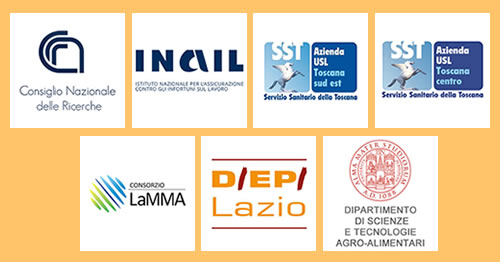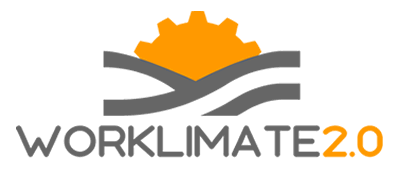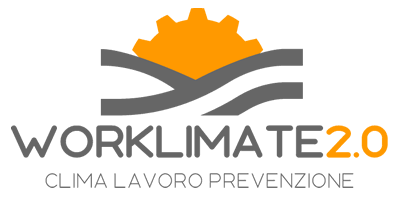Working in the shade and intense physical activity
The heat risk national maps are provided by an experimental system of automatic forecasting obtained from a meteorological model affected by intrinsic uncertainty and therefore variable with the characteristics of the territory.
This information is a support to be used together with the existing tools and direct observation in the workplace.
sun
Shadow
Risk Legend
blank
None
Maintain your usual work rhythm and hydration procedures.
Not significant heat stress is expected. No additional precautions or interruptions are necessary beyond those foreseen in one’s own work.
Low
Pay more attention to hydration and plan short breaks.
A low risk level (pre-alarm/attention condition) is expected. The expected conditions should not affect the performance of usual work activities. Heat stress conditions (generally low) and increased sweating may occur. Lightening of clothing and attention to hydration are suggested.
Moderate
Sip water frequently and increase the number of breaks in cool places.
There is a moderate risk level (Alert). Your sweating will be high, so it is advisable to sip water frequently. Remember to keep your hydration level high even outside working hours (be aware that thirst is not a good indicator of your hydration level when sweating is high). Increase the number of breaks in shady places. If this level of risk is expected in the early days of summer (when you are not yet acclimatised to the heat), pay extra attention to your hydration level. Consider rescheduling work activities, preferring cooler periods of the day for more demanding tasks.
High
Drink often, even a little more than 1 L/h and plan frequent breaks in shady places or conditioned areas.
There is a high risk level (Emergency). This risk level is associated with severe critical heat stress. It is strongly recommended to modify working hours, favouring less hot periods of the day, even for a moderate activity level. If possible, further increase breaks in shaded or air-conditioned areas where it is also possible to rehydrate. The high water requirement may also necessitate taking just over 1 L of water during the hottest hours. The competent doctor may also provide for mineral salts to be added.
Working in the shade and intense physical activity
The heat risk national maps are provided by an experimental system of automatic forecasting obtained from a meteorological model affected by intrinsic uncertainty and therefore variable with the characteristics of the territory.
This information is a support to be used together with the existing tools and direct observation in the workplace.
sun
Shadow
Risk Legend
blank
None
Maintain your usual work rhythm and hydration procedures.
Not significant heat stress is expected. No additional precautions or interruptions are necessary beyond those foreseen in one’s own work.
Low
Pay more attention to hydration and plan short breaks.
A low risk level (pre-alarm/attention condition) is expected. The expected conditions should not affect the performance of usual work activities. Heat stress conditions (generally low) and increased sweating may occur. Lightening of clothing and attention to hydration are suggested.
Moderate
Sip water frequently and increase the number of breaks in cool places.
There is a moderate risk level (Alert). Your sweating will be high, so it is advisable to sip water frequently. Remember to keep your hydration level high even outside working hours (be aware that thirst is not a good indicator of your hydration level when sweating is high). Increase the number of breaks in shady places. If this level of risk is expected in the early days of summer (when you are not yet acclimatised to the heat), pay extra attention to your hydration level. Consider rescheduling work activities, preferring cooler periods of the day for more demanding tasks.
High
Drink often, even a little more than 1 L/h and plan frequent breaks in shady places or conditioned areas.
There is a high risk level (Emergency). This risk level is associated with severe critical heat stress. It is strongly recommended to modify working hours, favouring less hot periods of the day, even for a moderate activity level. If possible, further increase breaks in shaded or air-conditioned areas where it is also possible to rehydrate. The high water requirement may also necessitate taking just over 1 L of water during the hottest hours. The competent doctor may also provide for mineral salts to be added.
Working in the shade and intense physical activity
The heat risk national maps are provided by an experimental system of automatic forecasting obtained from a meteorological model affected by intrinsic uncertainty and therefore variable with the characteristics of the territory.
This information is a support to be used together with the existing tools and direct observation in the workplace.
Risk Legend
blank
None
Maintain your usual work rhythm and hydration procedures.
Not significant heat stress is expected. No additional precautions or interruptions are necessary beyond those foreseen in one’s own work.
Low
Pay more attention to hydration and plan short breaks.
A low risk level (pre-alarm/attention condition) is expected. The expected conditions should not affect the performance of usual work activities. Heat stress conditions (generally low) and increased sweating may occur. Lightening of clothing and attention to hydration are suggested.
Moderate
There is a moderate risk level (Alert). Your sweating will be high, so it is advisable to sip water frequently. Remember to keep your hydration level high even outside working hours (be aware that thirst is not a good indicator of your hydration level when sweating is high). Increase the number of breaks in shady places. If this level of risk is expected in the early days of summer (when you are not yet acclimatised to the heat), pay extra attention to your hydration level. Consider rescheduling work activities, preferring cooler periods of the day for more demanding tasks.
High
Drink often, even a little more than 1 L/h and plan frequent breaks in shady places or conditioned areas.
There is a high risk level (Emergency). This risk level is associated with severe critical heat stress. It is strongly recommended to modify working hours, favouring less hot periods of the day, even for a moderate activity level. If possible, further increase breaks in shaded or air-conditioned areas where it is also possible to rehydrate. The high water requirement may also necessitate taking just over 1 L of water during the hottest hours. The competent doctor may also provide for mineral salts to be added.
sun
shadow
i partner


contatti
Marco Morabito
Consiglio Nazionale delle Ricerche, Istituto per la BioEconomia
(CNR-IBE)
marco.morabito@ibe.cnr.it
Alessandro Marinaccio
Inail, Dipartimento di Medicina, Epidemiologia e Igiene, Laboratorio di Epidemiologia
(Inail, Dimeila)
a.marinaccio@inail.it
Michela Bonafede
Dipartimento di Medicina, Epidemiologia e Igiene, Laboratorio di Epidemiologia
(Inail, Dimeila)
m.bonafede@inail.it
Informativa Privacy









